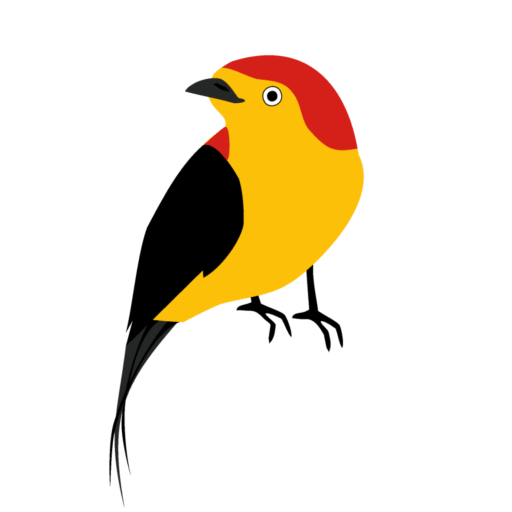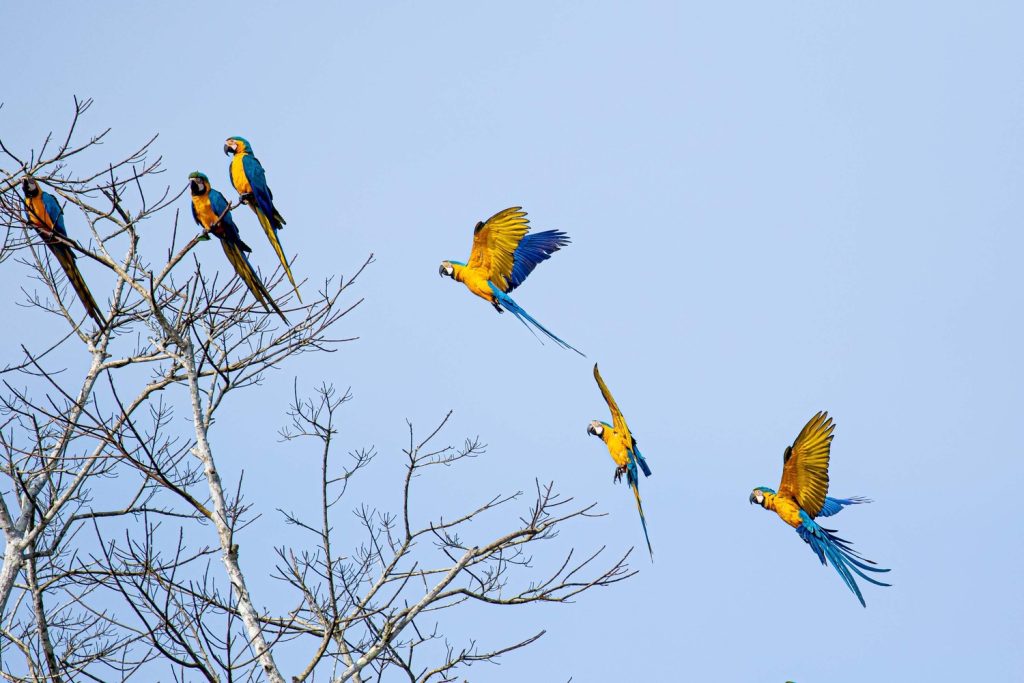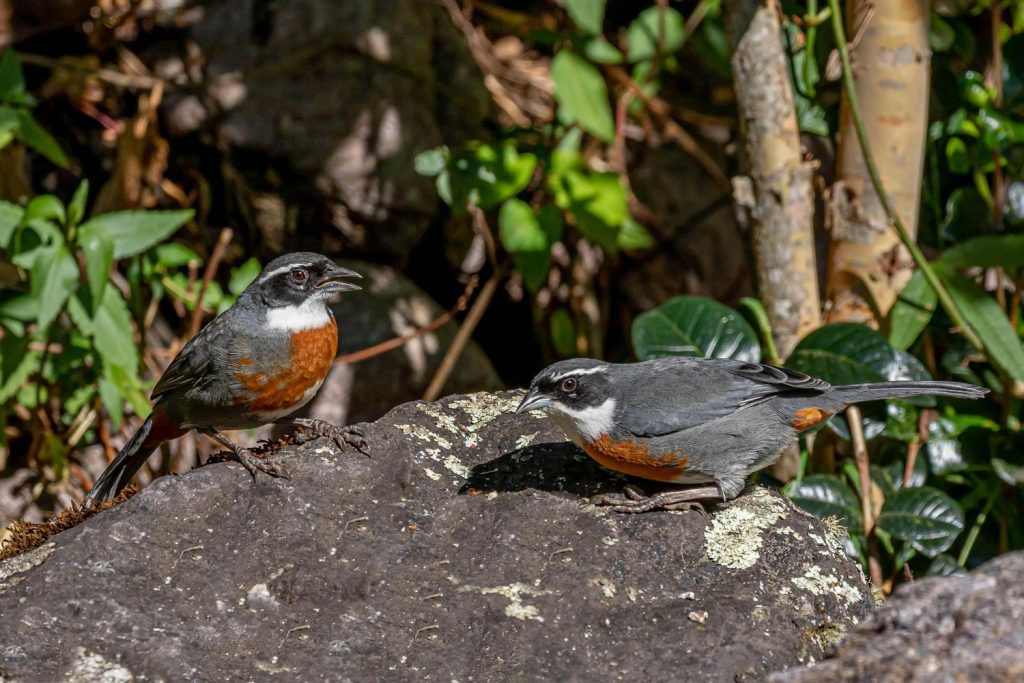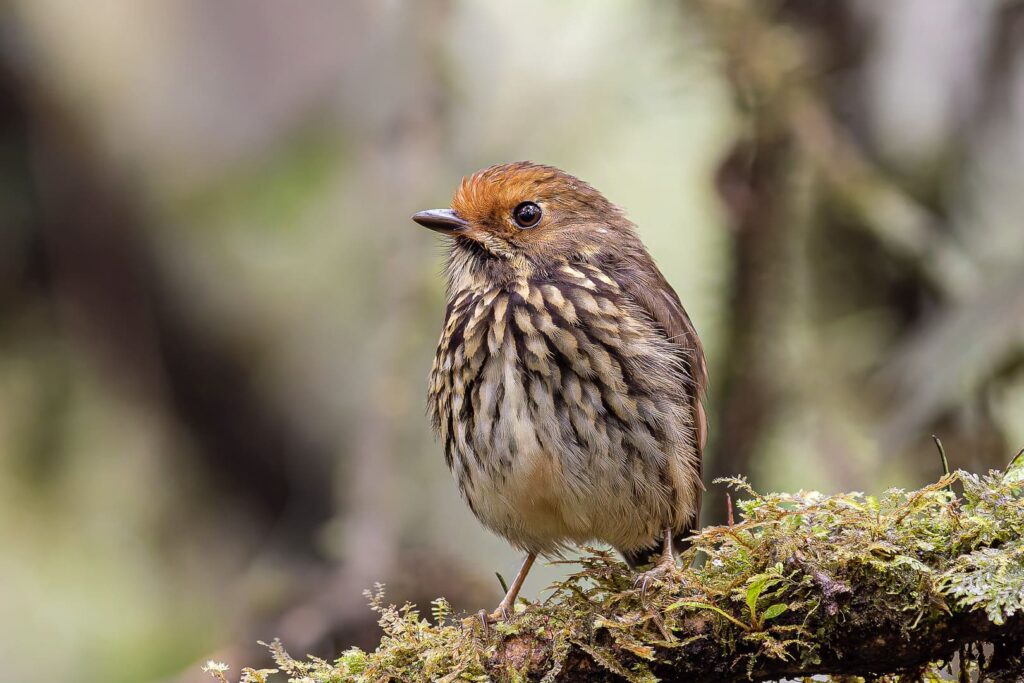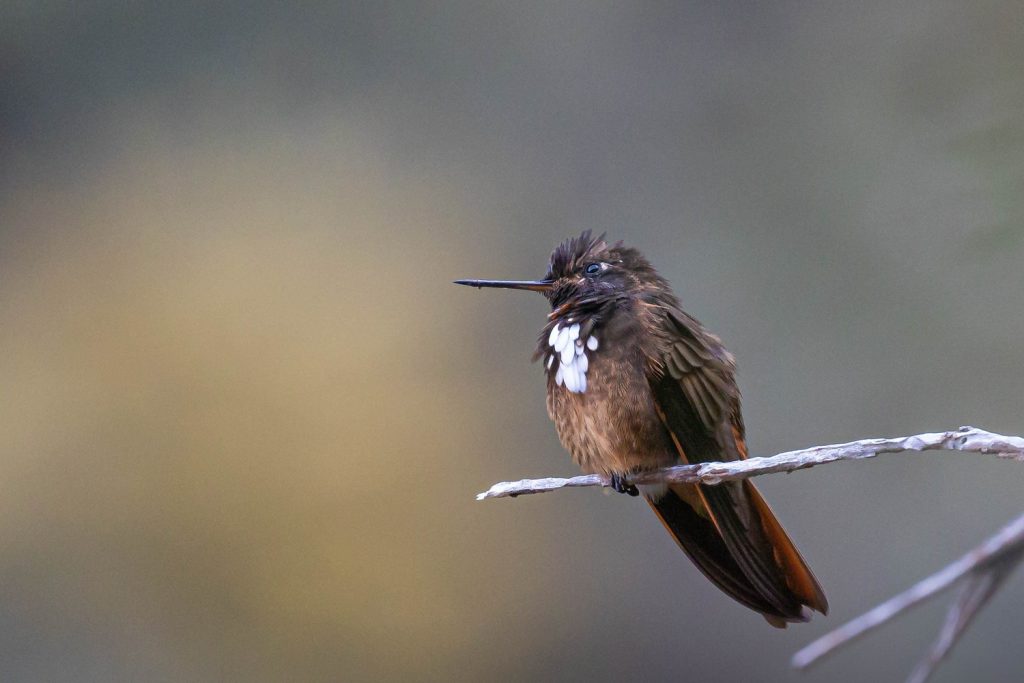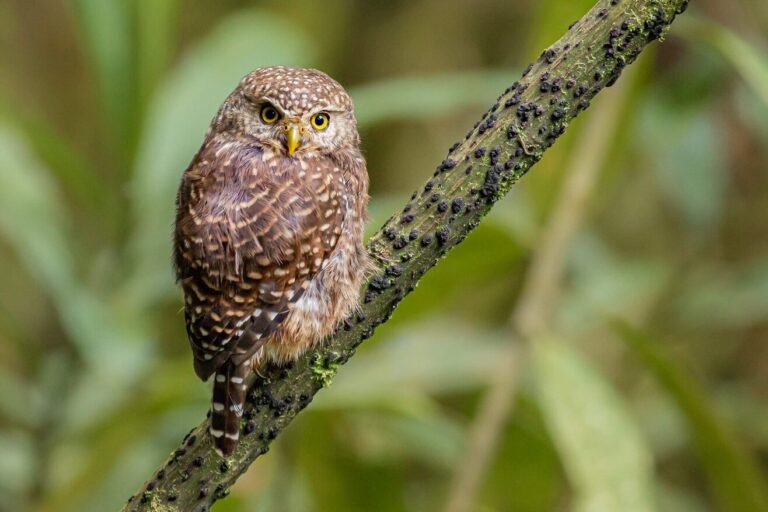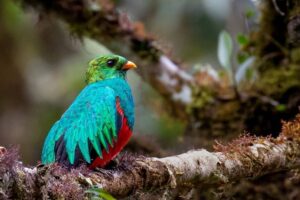Understanding the controversy of impacts of Birdwatching
Birdwatching, often perceived as a serene and environmentally friendly hobby, harbors a less discussed aspect that intertwines ethical quandaries with the hobbyist’s zeal. This chapter delves into the underlying controversies and ethical dilemmas of the impacts of birdwatching, setting a foundational understanding for both enthusiasts and scholars.
The Thrill of the Chase
The pursuit of birdwatching, for many, transcends mere observation; it becomes a quest to document or witness rare and elusive species. This thrill, while enriching, occasionally steers behaviors towards ethically grey territories. Research indicates that the desire to complete «life lists» — personal records of species sighted — can sometimes lead to obsessive behaviors. A study published in the Journal of Wildlife Management outlines how some birdwatchers may inadvertently prioritize their lists over the welfare of the birds, venturing too close to nests or using disruptive methods to elicit responses from birds.
Case Studies: The Impact of Intense Birdwatching
Several case studies highlight the impact of birdwatching on avian behavior and habitat. One notable example is the disturbance of the nesting sites of the Black Rail in the Chesapeake Bay area, reported in a 2019 study from Conservation Biology. The study revealed that excessive human activity near the nests increased the stress levels in these birds, leading to lower hatching rates.
Another case involves the Kakapo, a critically endangered parrot from New Zealand. Efforts to observe this nocturnal bird have sometimes led to interference with its natural behaviors, particularly during its breeding season. Researchers have documented cases where excessive human presence has disrupted the Kakapo’s breeding activities, potentially threatening its recovery efforts.
Ethical Dilemmas: Rarity vs. Conservation
A fundamental ethical dilemma in birdwatching arises from the conflict between the desire to observe rare species and the imperative to conserve their populations. The rarity of a species often increases its desirability among birdwatchers, which paradoxically can lead to increased pressure on already vulnerable populations. For instance, the Spoon-billed Sandpiper, with a global population estimated at under 500 individuals, has seen habitats disturbed by eager observers and photographers, despite conservationists’ efforts to restrict access.
The Role of Research in Ethical Birdwatching
Research plays a crucial role in informing ethical practices in birdwatching. By studying the impacts of birdwatching on bird populations, researchers can develop guidelines that mitigate adverse effects. For example, data-driven approaches can help establish safe distances for observation and guidelines for minimizing habitat disruption. Scholarly articles and ongoing studies in ornithology journals continually provide updates on best practices, emphasizing the importance of being well-informed and considerate in the field.
As this chapter illustrates, while birdwatching can be a source of joy and an educational pursuit, it is not without its ethical complications. The responsibility lies with each birdwatcher to navigate these complexities thoughtfully, balancing the excitement of discovery with the imperative of conservation. Subsequent chapters will explore specific controversial methods in more detail, offering insight into how enthusiasts can pursue their passion in a manner that respects the avian subjects at the heart of their hobby.

THE LURE OF RARITY: WHEN PASSION CROSSES THE LINE
The allure of spotting a rare or elusive bird species is one of the most compelling aspects of birdwatching. This chapter examines how this allure can sometimes lead birdwatchers to cross ethical boundaries, resulting in behaviors that may compromise the welfare of birds and their habitats.
The Psychology of Rarity
Rarity in birdwatching carries a unique appeal, often seen as a badge of honor among enthusiasts. The rarity of a bird can elevate its status to almost mythical proportions within birdwatching communities. Academic research, including a comprehensive study published in the Journal of Ecological Psychology, suggests that the pursuit of rare birds may trigger competitive behaviors akin to those found in other collecting activities. This competitiveness can push birdwatchers to take risks or engage in questionable practices to add rare sightings to their life lists.
Case Studies: The Consequences of Chasing Rarities
Documented instances abound where the pursuit of rare birds has led to unintended ecological consequences. One prominent case involves the Harpy Eagle in Central and South America. As birdwatchers and eco-tour operators frequently visit nesting sites to observe and photograph this majestic raptor, their presence has sometimes led to disturbances that threaten the eagles’ ability to rear their young successfully. Research conducted by the Wildlife Society Bulletin reported instances where increased human activity near Harpy Eagle nests correlated with a noticeable decline in chick survival rates.
Another case study from the forests of Eastern Russia illustrates the plight of the Blakiston’s Fish Owl, one of the world’s largest owl species. The desire to observe these rare owls has led to increased foot traffic in their habitat, disrupting their nocturnal hunting patterns. A study featured in Bird Conservation International highlighted how even minimal human presence can alter the owls’ behavior, potentially affecting their health and breeding success.
Ethical Implications and Wildlife Guidelines
The ethical implications of pursuing rare birds are profound. They force a reevaluation of birdwatching practices, urging enthusiasts and professionals alike to consider the long-term welfare of the birds over the immediate gratification of a rare sighting. Wildlife management organizations, including the International Union for Conservation of Nature (IUCN), have developed guidelines that recommend best practices such as maintaining a respectful distance from nests and using observation blinds to minimize human visibility and disturbance. See more here.
Balancing Curiosity with Conservation
To balance the desire to observe rare species with the need to protect them, birdwatching groups and conservation bodies often promote the concept of «ethical birdwatching.» This approach emphasizes the importance of awareness and restraint in birdwatching activities. It advocates for the use of technology, such as powerful optics and cameras with long-range lenses, which can reduce the need to approach birds closely. Moreover, ethical birdwatching encourages participation in citizen science projects, where observations of rare birds contribute to broader conservation efforts without causing harm.
This chapter underscores the dual nature of rarity in birdwatching—both a motivator and a potential threat. It calls for a collective ethical stance that prioritizes the conservation and welfare of birds above the thrill of the chase. As we continue to explore the darker sides of birdwatching in subsequent chapters, it becomes clear that ethical awareness and responsible behavior are essential for the sustainability of birdwatching as both a hobby and a tool for conservation.
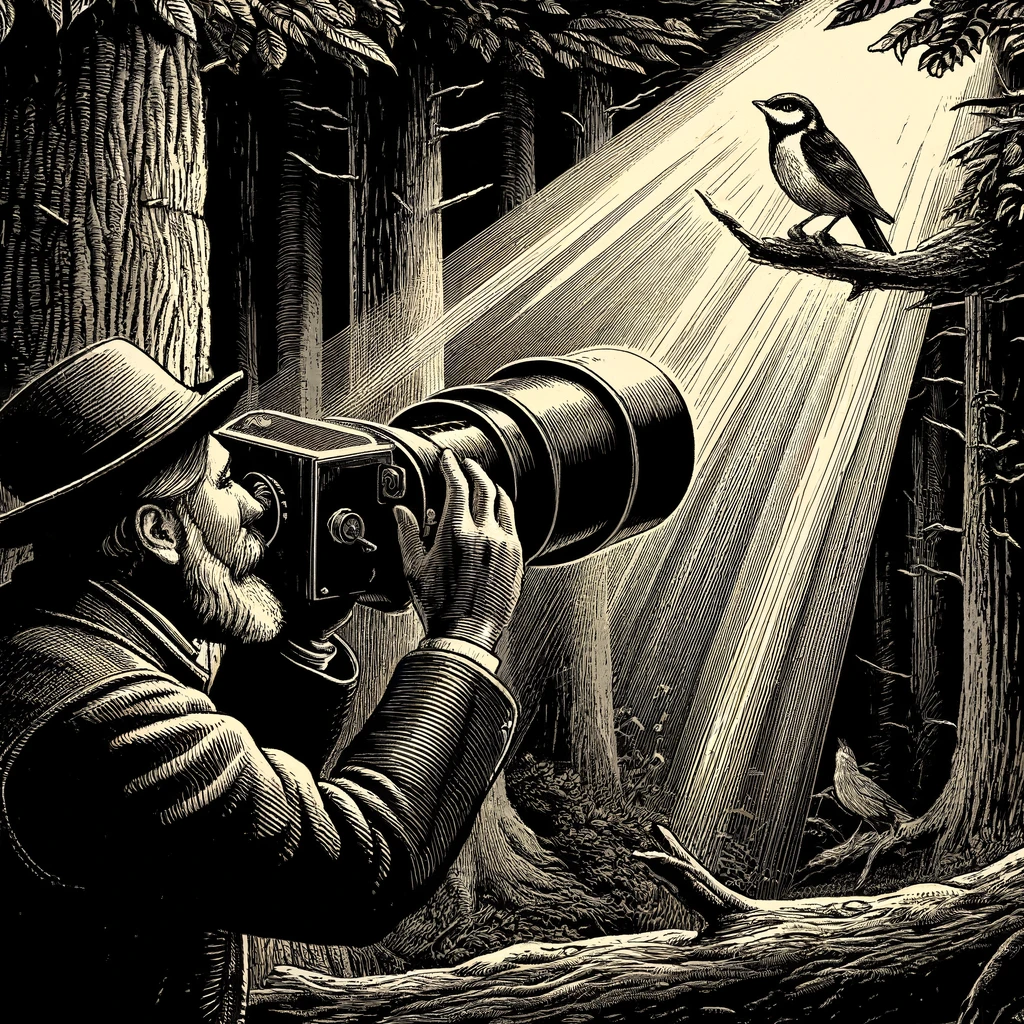
PHOTOGRAPHY AT WHAT COST?
In the world of birdwatching, photography plays a crucial role, serving not only as a form of artistic expression but also as a method of documenting and sharing observations. However, the quest to capture the perfect image of birds can sometimes lead photographers to engage in practices that are ethically questionable and potentially harmful to their subjects. As you delve into this chapter, you can explore some bird photography tips to ensure your practices align with ethical standards. This chapter also explores the ethical dilemmas associated with bird photography and suggests ways to mitigate the negative impacts of birdwatching.
The Drive to Document
Bird photography has grown significantly with advancements in digital imaging technology, which has made high-quality equipment more accessible to amateurs and professionals alike. The ability to share images on social media and photography forums has further fueled the enthusiasm for capturing stunning bird photos. However, as noted in a study from the Journal of Avian Biology, this drive can sometimes lead photographers to prioritize the capture of a rare or spectacular image over the well-being of the bird.
Case Studies: Ethical Breaches in Bird Photography
Several notable incidents highlight the ethical breaches in bird photography. For instance, the use of artificial light sources, such as flash photography at night, has been documented to disorient nocturnal birds like owls. Research published in the Journal of Field Ornithology demonstrates that such disorientation can lead to temporary blindness, leaving the birds vulnerable to predators or collisions with obstacles.
Another controversial practice is baiting—using live or artificial bait to lure birds into the desired position for a photograph. A well-documented example involves the use of dead mice to attract raptors. While effective for photographers, a study in Conservation Ethics found that repeated baiting can alter the natural hunting behaviors of these birds, making them dependent on artificial food sources and potentially impacting their health and survival prospects.
The impact of birdwatching and disturbance
Physical disturbance is another significant concern in bird photography. Approaching too closely to birds, especially during sensitive periods such as breeding or nesting, can cause stress and lead to abandonment of nests, as observed in coastal bird colonies. Guidelines from the Audubon Society suggest maintaining a distance that does not alter the behavior of birds, advocating for the use of long lenses to achieve close-up shots without close proximity.
Promoting Ethical Practices in Bird Photography
To combat these ethical dilemmas, several organizations have developed guidelines for ethical bird photography. These guidelines often emphasize the importance of observing birds without causing stress or harm. They include recommendations such as keeping a respectful distance, avoiding the use of calls or playback to attract birds, and refraining from artificially altering the environment to create more photogenic scenes.
Photography competitions and wildlife organizations now often require participants to adhere to ethical guidelines, and some have even begun to disqualify entries that show evidence of disturbing wildlife, a practice that reinforces the importance of ethics in wildlife photography. See more here.
As we delve deeper into the dark side of birding, it becomes clear that photography, while a valuable and enjoyable aspect of birdwatching, carries its own set of ethical challenges. Bird photographers, whether amateur or professional, must continually educate themselves about the potential impacts of birdwatching, their activities and strive to practice and promote ethical photography. By doing so, they not only protect the subjects of their art but also contribute to the broader conservation efforts that ensure the survival and well-being of bird populations worldwide.

TECHNOLOGICAL INTRUSIONS: THE ETHICS OF PLAYBACK
The use of playback technology—playing recorded bird calls to attract birds into view—is a common practice among birdwatchers and researchers. While effective for enhancing birdwatching experiences and scientific studies, the ethical implications of this method can be significant. This chapter delves into the controversy surrounding playback, examining its effects on bird behavior and welfare, and discussing the guidelines that aim to mitigate the negative impacts of birdwatching.
Understanding Playback Technology
Playback technology involves the use of audio devices to play recordings of bird calls or songs, which can attract certain species by eliciting territorial or mating responses. This technique is particularly popular in dense habitats where visibility is limited, or with elusive species that are difficult to spot. However, a growing body of research, including findings published in the Journal of Ornithology, has begun to question the broader impacts of these practices on bird populations.
Case Studies: The Effects of Playback on Bird Behavior
Studies have shown that playback can have various effects on birds, ranging from temporary changes in behavior to more lasting impacts of birdwatching on health and breeding success. For example, research conducted in the Amazon rainforest observed that repeated playback use led to increased stress levels in antbirds, as evidenced by their elevated metabolic rates and aggressive territorial responses that could divert energy from other essential activities like foraging and mating.
Another study focused on the North American wood-warbler documented that excessive playback during the breeding season caused males to engage more frequently in territory defense, reducing the time they spent on nest-building and feeding their young. These behaviors, intensified by playback, can potentially lead to decreased reproductive success. See more here.
Ethical Considerations and Guidelines
The ethical debate over playback centers on the balance between its benefits for observation and research and the potential distress and disruption it causes to birds. Many birdwatching and ornithological organizations have developed guidelines to help minimize these negative effects. These guidelines generally recommend:
- Limiting Use: Restricting playback to instances where it significantly enhances birdwatching or is crucial for scientific data collection.
- Avoiding Sensitive Periods: Refraining from playback during breeding seasons or in areas where birds are particularly vulnerable to disturbance.
- Monitoring Responses: Observing the behavior of birds during playback and stopping immediately if signs of distress or disruption are evident.
Promoting Responsible Use
Education plays a critical role in promoting the responsible use of playback technology. Workshops, field guides, and birdwatching apps increasingly include sections on ethical birdwatching practices, emphasizing the careful use of playback. Moreover, birdwatching tours and guides are encouraged to educate participants about the potential impacts of playback and to demonstrate ethical alternatives, such as waiting patiently for natural observations.
As this chapter illustrates, while playback is a powerful tool for birdwatching and ornithological research, it comes with significant ethical responsibilities. By adhering to established guidelines and prioritizing the welfare of bird populations, birdwatchers and researchers can ensure that their use of playback technology contributes positively to the understanding and conservation of birds rather than inadvertently harming them. The subsequent chapters will continue to explore additional ethical dilemmas in birdwatching, further highlighting the importance of responsible practices in the pursuit of this engaging activity.
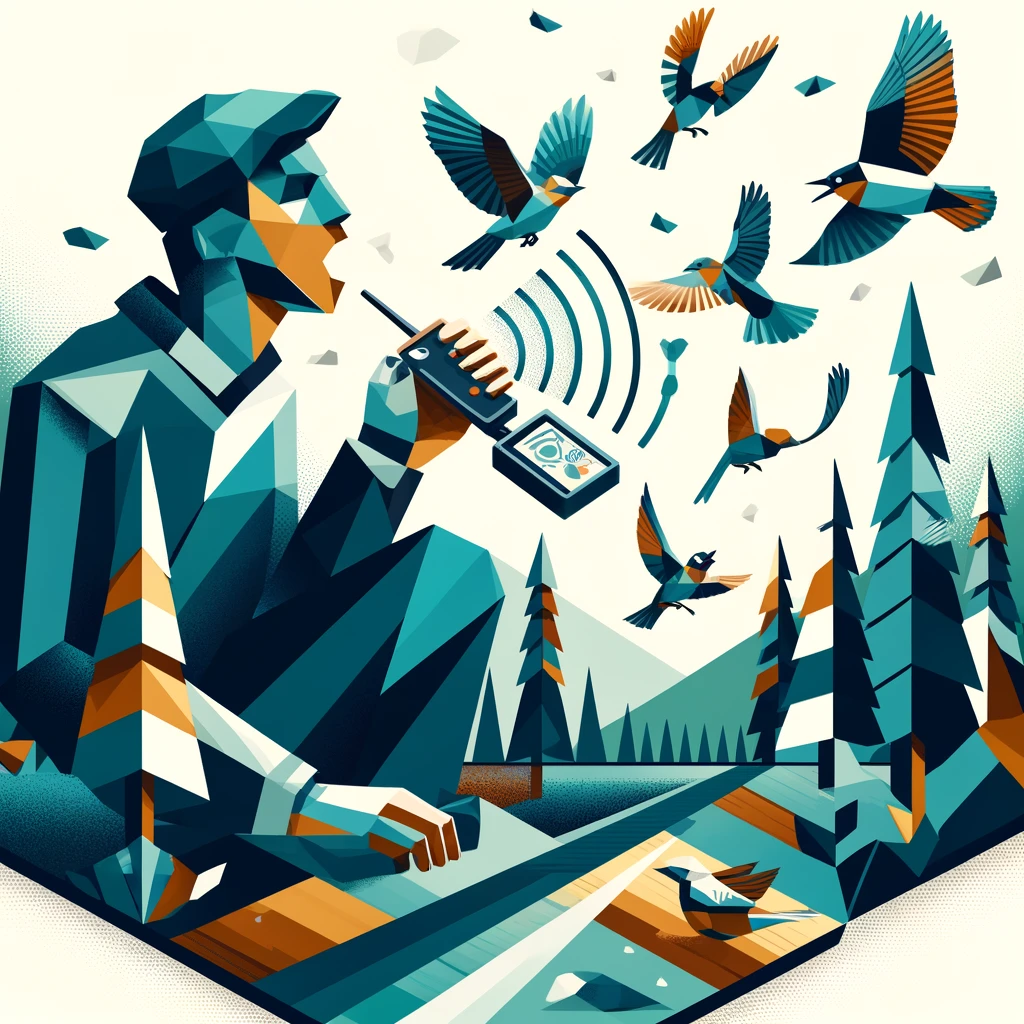
COMMERCIALIZATION AND CONSERVATION: A DELICATE BALANCE
The intersection of commercial interests and conservation efforts in birdwatching creates a complex landscape of ethical considerations. This chapter explores how the growing popularity of birdwatching tours and related activities can both support and undermine conservation goals, depending on their management and execution.
The Rise of Birdwatching Tourism
Birdwatching tourism has become a significant economic driver in many regions, providing crucial income for local communities and funding for conservation projects. As reported by the Global Ecotourism Network, birdwatching tours can generate substantial revenue, which, when properly managed, contributes to the preservation of important bird habitats and promotes awareness about bird conservation.
Case Studies: Successes and Challenges
One notable success story is the Monteverde Cloud Forest Reserve in Costa Rica, where birdwatching tourism has been a catalyst for extensive habitat conservation efforts. Revenue from birdwatching tours has funded reforestation projects and environmental education programs that have helped increase local bird populations, including the iconic Resplendent Quetzal.
Conversely, the situation in the Philippines with the Philippine Eagle showcases some of the challenges. While ecotourism has raised awareness about the eagle’s plight, inadequate management and lack of proper regulations have sometimes led to habitat disruption and increased human pressure on critical nesting sites, as detailed in a study published in the Journal of Sustainable Tourism.
Balancing Economic Benefits with Ecological Impact
The dual nature of birdwatching tourism necessitates a careful balance between leveraging its economic benefits and mitigating its ecological impacts. This balance requires:
- Sustainable Tourism Practices: Implementing strategies that minimize environmental impact, such as establishing visitor limits, using established trails, and avoiding sensitive areas during critical breeding seasons.
- Community Involvement: Engaging local communities in tourism planning and benefits distribution ensures that conservation efforts are supported by those who live closest to the habitats.
- Education and Awareness: Educating tourists about the ecological importance of birds and the sensitivity of their habitats can promote more respectful and conservation-minded behaviors.
Guidelines for Ethical Birdwatching Tourism
Several international and local organizations have developed guidelines to promote ethical birdwatching tourism. These include recommendations for tour operators and guides, such as:
- Training guides to understand and communicate the importance of conservation.
- Designing tours that support conservation efforts, either directly through fundraising or indirectly by raising awareness.
- Encouraging birdwatchers to adhere to ethical guidelines, such as keeping a safe distance from birds and not using playback devices excessively.
The commercialization of birdwatching, if conducted ethically and sustainably, holds tremendous potential for contributing positively to conservation efforts. However, it requires diligent management to ensure that the activities of birdwatchers and the operations of tour companies do not inadvertently harm the very species and habitats they aim to protect. As we move forward, the integration of robust conservation practices into commercial birdwatching will be essential for ensuring that this popular activity continues to benefit bird populations worldwide. This chapter sets the stage for further discussions on the individual responsibilities of birdwatchers and the collective efforts needed to safeguard birdlife as part of the broader environmental conservation movement.

IMPACTS OF BIRDWATCHING’S CARBON FOOTPRINT: AN INCONVENIENT TRUTH
While birdwatching is often celebrated as a nature-based, environmentally friendly activity, it also contributes to global environmental issues, particularly through the carbon emissions associated with travel. This chapter examines the carbon footprint of birdwatching, particularly focusing on the impact of international travel to exotic locations, and discusses ways to mitigate these effects.
The Environmental Cost of Birdwatching Travel
Birdwatching often involves travel to remote or internationally renowned birding hotspots, which can mean significant air travel for many enthusiasts. Air travel is one of the largest contributors to carbon emissions globally. According to a report by the International Council on Clean Transportation, aviation accounted for about 2.5% of global carbon dioxide emissions in recent years, and this percentage is expected to rise as tourism grows.
Case Studies: The Impact of International Birdwatching Trips
For example, trips to the Amazon rainforest in Brazil or the cloud forests of Papua New Guinea are popular among birdwatchers seeking rare species like the Harpy Eagle or the Birds-of-paradise. However, these trips typically require long-haul flights, which significantly contribute to carbon emissions. A study published in the Journal of Sustainable Tourism analyzed the carbon footprint of wildlife tourism and suggested that long-distance travel to biodiversity-rich but fragile ecosystems could undermine the conservation benefits of eco-tourism by exacerbating climate change, which in turn impacts these delicate habitats.
Reducing the Carbon Footprint
Addressing the carbon footprint of birdwatching travel involves several strategies that can be implemented by individuals and tour operators alike:
- Carbon Offsetting: Many birdwatchers and travel companies choose to invest in carbon offset programs, which fund projects that reduce greenhouse gas emissions, such as reforestation or renewable energy projects.
- Promoting Sustainable Travel Practices: This includes using public transportation, joining group tours to reduce individual vehicle use, and choosing eco-friendly accommodations.
The Role of Technology in Sustainable Birdwatching
Advances in technology also offer opportunities to reduce the need for physical travel. Virtual birdwatching tours, webcams in bird habitats, and online databases of bird calls and sightings can provide alternatives to traveling, allowing enthusiasts to enjoy and learn about birds from afar.
Ethical Considerations and Guidelines
The birdwatching community, including organizations like the Audubon Society and BirdLife International, increasingly acknowledges the need to address the environmental impact of birdwatching and its activities. They promote guidelines that encourage more sustainable practices in birdwatching. These guidelines advocate for awareness of travel impacts, encouraging birdwatchers to consider the ecological footprint of their hobby and to seek ways to minimize it.
While birdwatching brings many closer to nature, it also carries responsibilities to protect the environment that sustains these experiences. By becoming more aware of the carbon footprint associated with birdwatching and taking active steps to reduce it, birdwatchers can contribute to the broader efforts needed to mitigate climate change. This chapter underscores the importance of integrating sustainability into the practice of birdwatching, ensuring that it remains a positive force for conservation in the face of global environmental challenges. The subsequent sections will continue to explore how individual actions and community efforts can align to foster a more sustainable and ethically conscious birdwatching culture.
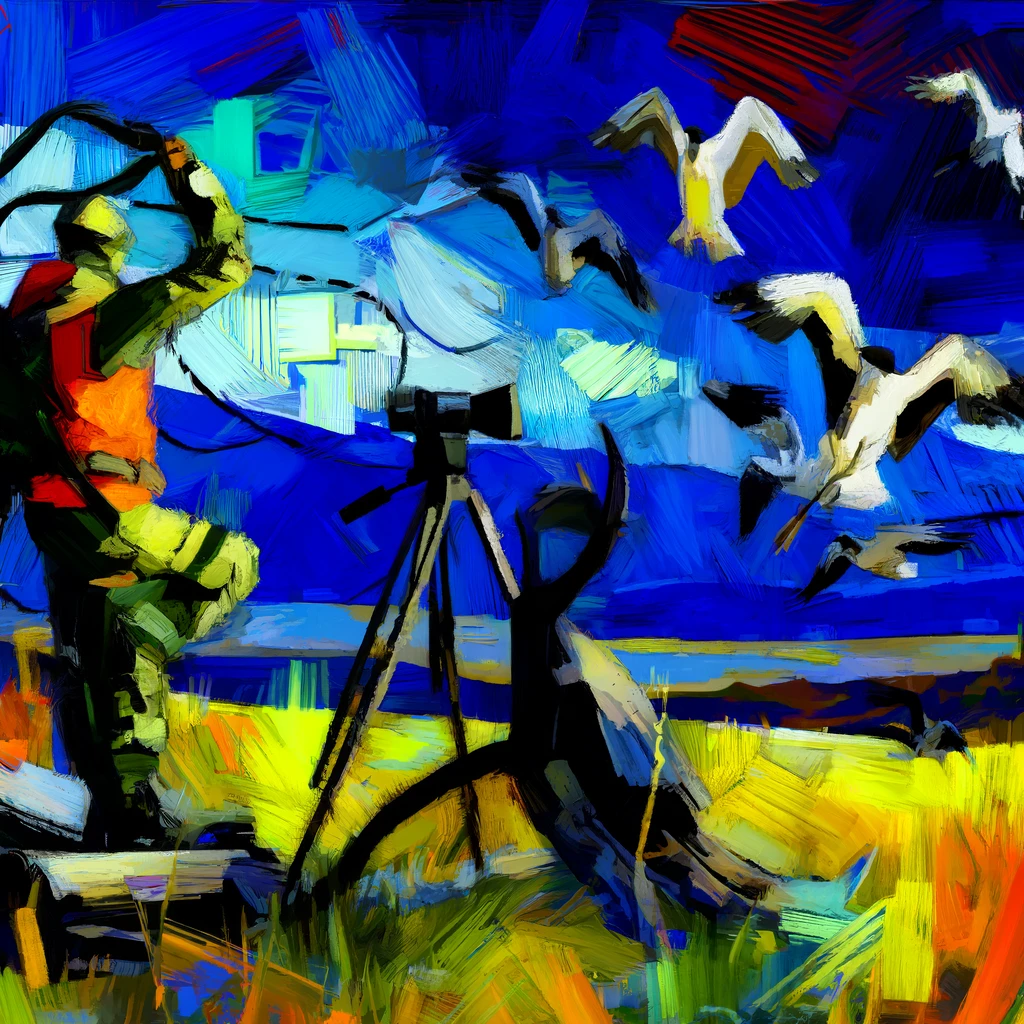
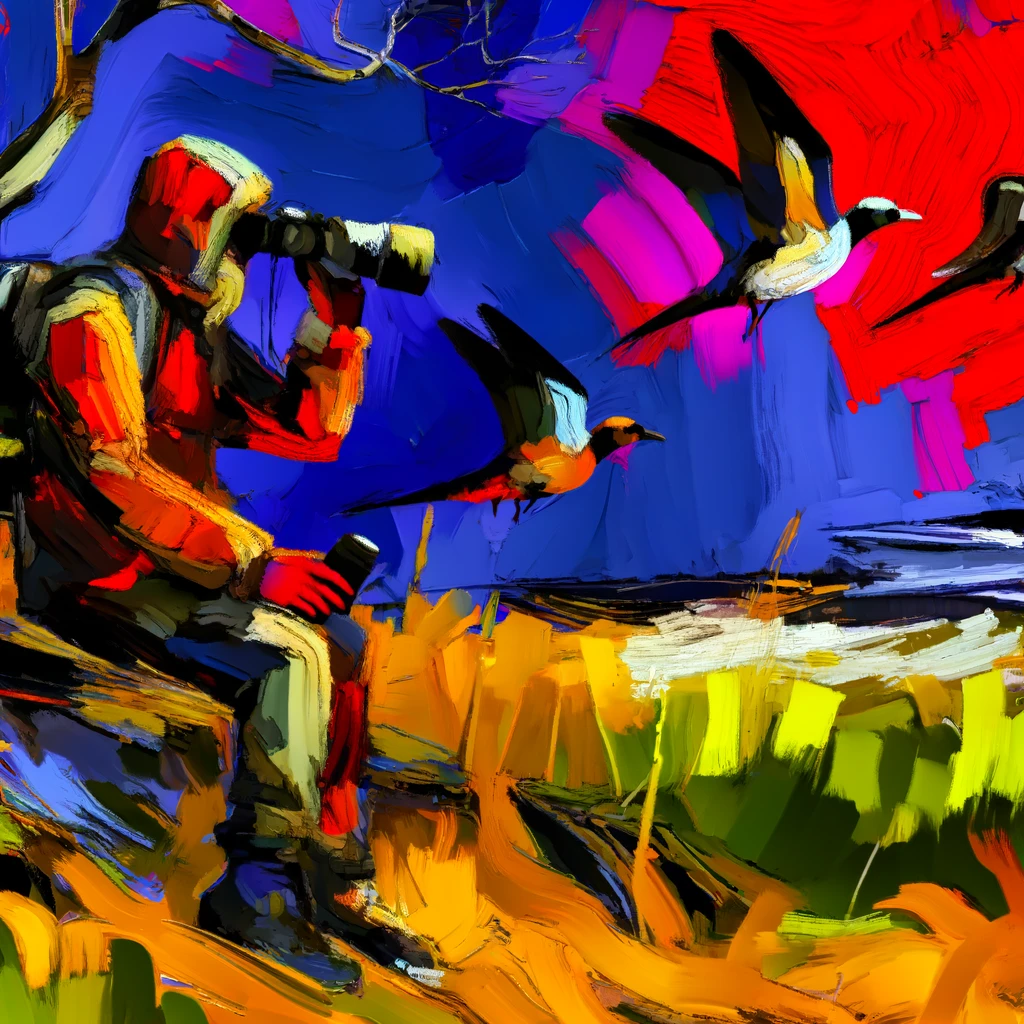
LOCAL COMMUNITIES AND BIRDWATCHING: CONFLICT OR COOPERATION?
The relationship between birdwatching tourism and local communities can vary greatly, swinging between conflict and cooperation based on how tourism is managed. This chapter explores the impacts of birdwatching in the local communities, how conflicts can arise, and what measures can be taken to ensure mutual benefits.
Impacts of Birdwatching on Local Communities
Birdwatching tourism can significantly affect local communities, especially those near important bird habitats. These impacts can be positive, such as generating income through employment opportunities in guiding, hospitality, and conservation projects. However, negative impacts of birdwatching are also possible, including resource competition, cultural disruption, and environmental degradation if tourism is not managed sustainably.
Case Studies: The Double-Edged Sword of Birdwatching
In the highlands of Papua New Guinea, birdwatching tours focused on the iconic Birds-of-paradise have brought substantial economic benefits to local villages. Communities have developed homestay programs and guiding services, creating economic opportunities that were previously unavailable. However, as noted in a study from the Journal of Ecotourism, without proper planning and local involvement, such tourism can also lead to habitat damage, waste management problems, and social issues as traditional ways of life are disrupted.
Conversely, in the Everglades National Park in the USA, birdwatching has been integrated into the broader management of the park with a strong emphasis on ecological sustainability and respect for local Seminole and Miccosukee tribes. This approach has minimized conflicts and maximized cooperation, ensuring that tourism supports conservation efforts and respects local cultural heritage.
Strategies for Harmonizing Relationships
To foster a positive relationship between birdwatching tourism and local communities, several strategies can be implemented:
- Community Involvement in Tourism Planning: Ensuring that local communities are involved in the planning and management of birdwatching activities helps align the interests of tour operators and local residents.
- Sharing Economic Benefits: Establishing clear mechanisms for local communities to benefit economically from birdwatching tourism is crucial. This can include employment opportunities, support for local businesses, and direct financial contributions to community projects.
- Educational and Cultural Exchange: Programs that facilitate understanding and respect between birdwatchers and local communities can enhance mutual respect and cooperation. These might include cultural exchange programs, community-led tours, and educational workshops on local customs and conservation.
Guidelines for Ethical Interaction
Organizations like the World Tourism Organization (UNWTO) and local tourism boards often provide guidelines to ensure that birdwatching tourism is conducted ethically with respect to local communities. These guidelines recommend:
- Respecting local traditions and customs.
- Minimizing environmental impacts.
- Ensuring a fair distribution of the economic benefits of tourism.
The interaction between birdwatching tourism and local communities does not have to be adversarial. With thoughtful management and ethical practices, it can provide substantial benefits to both birdwatchers and local residents. By fostering an atmosphere of cooperation and mutual benefit, birdwatching can contribute to the sustainable development of local areas while promoting the conservation of precious avian habitats.
The next chapter will delve deeper into guidelines and best practices that ensure birdwatching is both enjoyable and responsible, preserving the integrity of the activity and the environments it depends on.

TOWARDS ETHICAL BIRDWATCHING: GUIDELINES AND BEST PRACTICES
As birdwatching continues to grow in popularity, the need for ethical guidelines and best practices becomes increasingly important to ensure that this activity is sustainable and minimizes harm to bird populations and their habitats. This chapter outlines key guidelines and best practices that can help birdwatchers engage in more responsible and ethical birdwatching.
Establishing Ethical Guidelines
Ethical birdwatching involves a conscious effort to respect wildlife, habitats, and local communities while pursuing the enjoyment and educational benefits of observing birds. Recognized birdwatching and conservation organizations, such as the Audubon Society, BirdLife International, and the American Birding Association, have developed a set of ethics that serve as a guide for birdwatchers around the world.
Key Guidelines for Ethical Birdwatching
- Minimize Disturbance: Always maintain a safe distance from birds to avoid disturbing them, particularly during sensitive times such as breeding, nesting, or feeding. The use of binoculars and scopes can help observe birds from a distance without causing stress.
- Respect Habitat: Stick to marked trails and public paths to minimize habitat disturbance. Avoid trampling vegetation or disrupting nesting sites.
- Avoid Playback and Baiting: Use bird calls and playback devices sparingly, and never use them during breeding seasons or in heavily trafficked areas. Baiting should be avoided as it can alter natural behaviors and potentially harm bird health.
- Follow Local and National Laws: Adhere to all wildlife protection laws and regulations, which may vary by region. This includes observing rules set by protected areas and wildlife reserves.
- Support Conservation Efforts: Participate in or contribute to local and global bird conservation initiatives. This can include volunteering, donating to conservation organizations, or engaging in citizen science projects.
Best Practices in Different Contexts
- Solo Birdwatching: When birdwatching alone, ensure you are aware of your environment and maintain ethical practices without supervision. Personal responsibility is key.
- Group Tours and Guided Trips: Choose responsible tour operators who adhere to ethical birdwatching practices. Guides should enforce rules that protect birds and their habitats and educate participants about these practices.
- Photography and Recording: When photographing or recording birds, do so in a way that causes minimal disturbance. Use appropriate zoom lenses and avoid getting too close.
Educational Outreach and Community Involvement
Educating the public about ethical birdwatching practices is essential. Birdwatching clubs, wildlife organizations, and educational institutions can play a pivotal role by hosting workshops, seminars, and field trips that emphasize ethical practices. Engaging community members, especially youth, can foster a new generation of ethical birdwatchers.
Ethical birdwatching is not just about observing guidelines; it’s about fostering a deep respect for nature and wildlife. By adhering to these practices, birdwatchers can ensure that their activities contribute positively to bird conservation and the health of ecosystems. The final chapter will reflect on the future of birdwatching, emphasizing the need for ongoing education, community engagement, and the adoption of new technologies that enhance birdwatching while protecting bird populations.

CONCLUSION: THE PATH FORWARD FOR RESPONSIBLE BIRDWATCHING
As we have explored throughout this series, birdwatching is a hobby that connects countless individuals to the natural world, offering unique insights into the behavior and beauty of birds. However, as birdwatching’s popularity has grown, so too has its potential impacts of Birdwatching on the environments and species that enthusiasts cherish. This concluding chapter reflects on the future of birdwatching, emphasizing the need for ongoing education, community engagement, and the adoption of new technologies that promote responsible practices:
- Emphasizing Education and Ethical Awareness: The cornerstone of responsible birdwatching is a well-informed community that practices and promotes ethical behavior. Educational initiatives should focus not only on the identification and appreciation of birds but also on the ecological impacts of birdwatching activities. Birdwatching clubs, conservation organizations, and educational institutions must continue to provide resources and learning opportunities that highlight best practices and the importance of conservation.
- Leveraging Technology for Conservation: Advancements in technology offer exciting opportunities to enhance birdwatching while minimizing its ecological footprint. Apps that provide real-time data on bird locations can help distribute birdwatcher traffic more evenly, reducing pressure on popular sites. Drones and remote cameras can be used to observe birds in sensitive habitats without human intrusion. Moreover, virtual reality (VR) and augmented reality (AR) technologies can simulate birdwatching experiences, providing an educational tool that incurs no environmental cost.
- Strengthening Community Engagement: Birdwatching should be used as a tool to strengthen community ties and promote broader environmental stewardship. Engaging local communities, especially those near key birdwatching areas, in tourism management and conservation efforts ensures that they benefit directly from these activities. This engagement can foster a sense of ownership and responsibility towards local wildlife and habitats, leading to more sustainable practices.
- Global and Local Conservation Efforts: Birdwatchers are often passionate advocates for conservation, and their hobby places them in a unique position to support biodiversity preservation. Participation in global citizen science projects, such as eBird, allows birdwatchers to contribute valuable data that can be used for scientific research and conservation planning. Locally, birdwatchers can support habitat restoration projects and advocate for protective legislation. See more here.
- The Role of Birdwatching in Cultural Exchange: Birdwatching also serves as a bridge for cultural exchange; it brings people from different backgrounds together with a common purpose.
- Promoting birdwatching across different cultures can enhance global understanding and cooperation in conservation efforts, making it a powerful ambassador for environmental diplomacy.
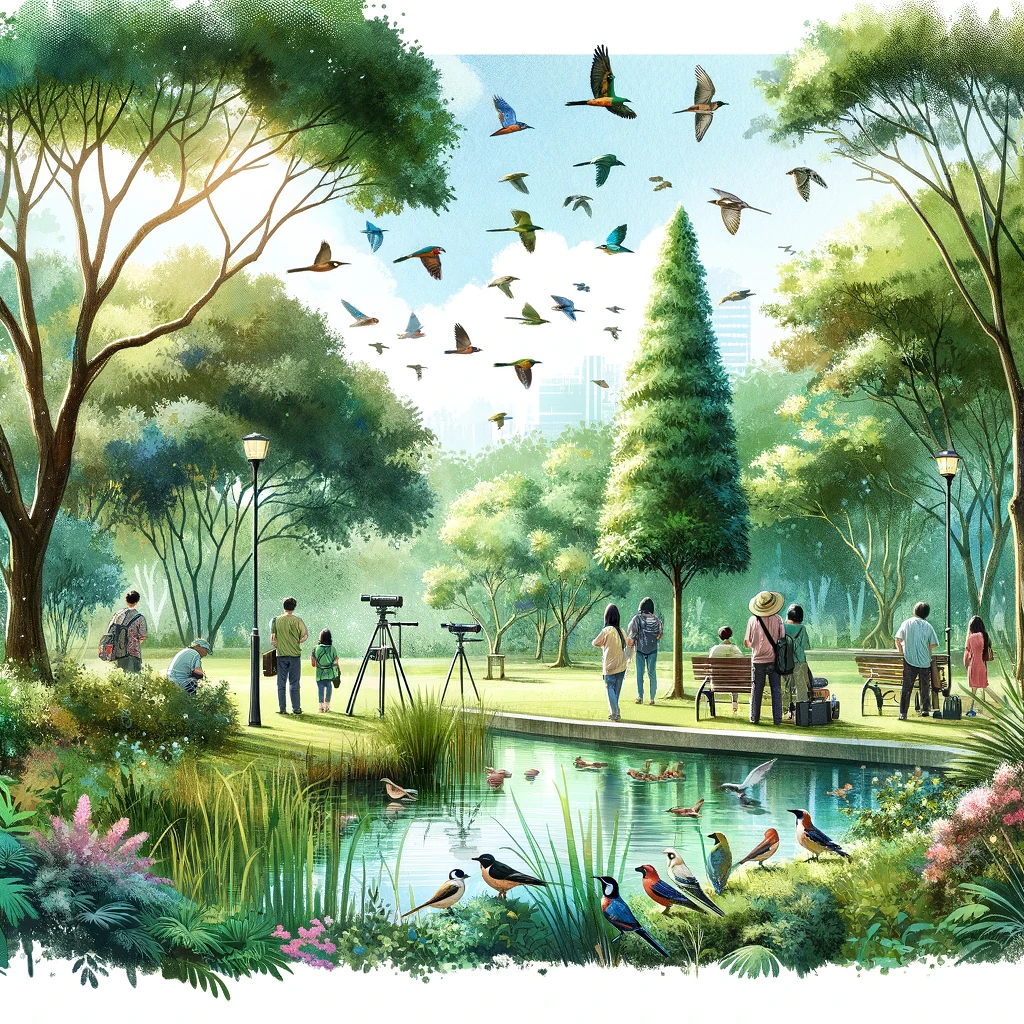
FINAL THOUGHTS
As birdwatching continues to evolve, the community must remain vigilant and proactive in its commitment to responsible practices. The future of birdwatching depends not only on the preservation of bird species and their habitats but also on the ethical conduct of those who observe them.
By fostering an ethic of respect and responsibility, birdwatchers can ensure that their passion contributes positively to the natural world and continues to enrich lives for generations to come.
Through responsible practices, ongoing education, and a commitment to conservation, the birdwatching community can look forward to a future where both people and birds thrive together in harmony with nature.

